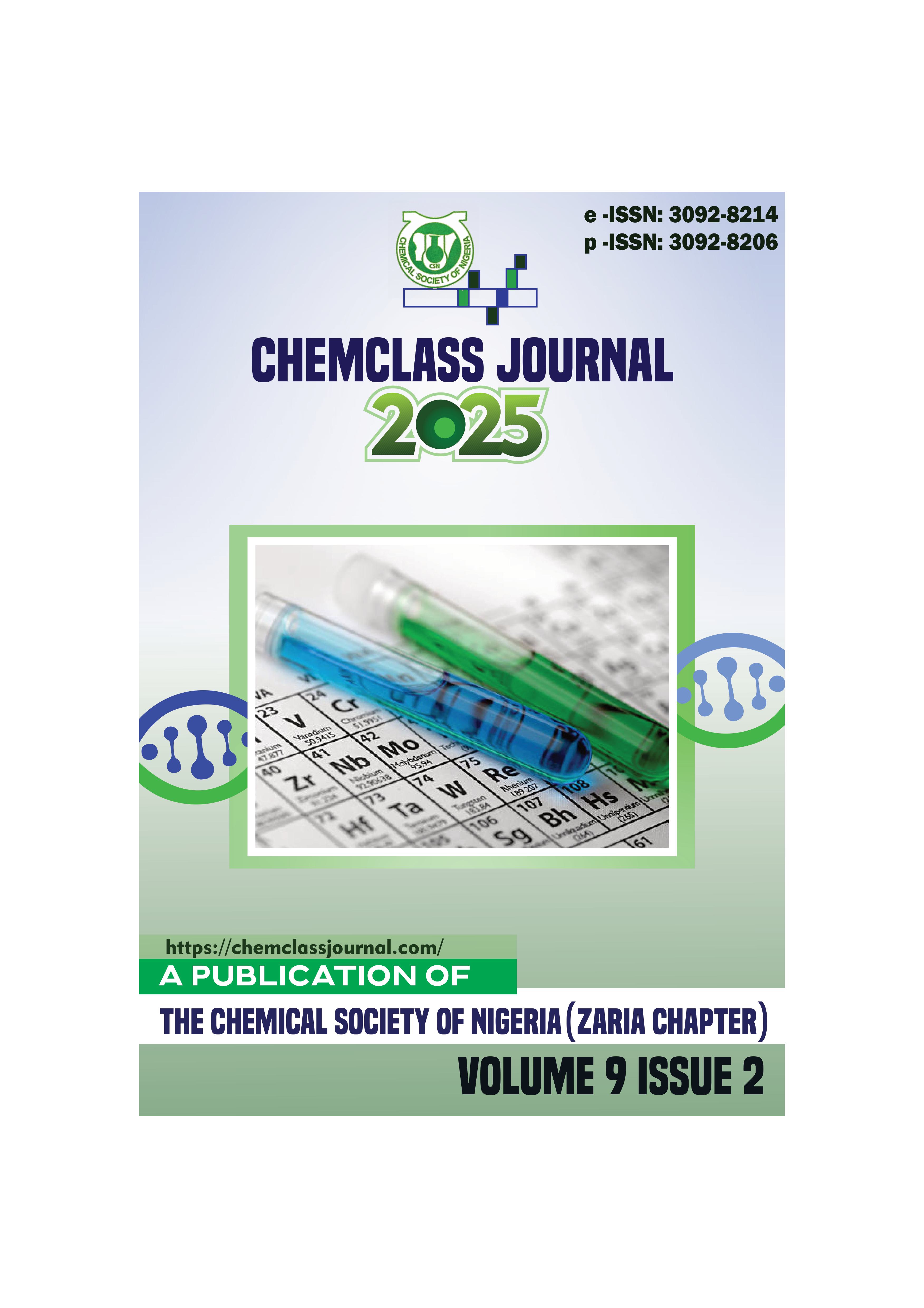Detection and identification of phenolic compounds in the rinds of red and yellow watermelon rinds using UHPLC-Q Exactive HF Orbitrap
DOI:
https://doi.org/10.33003/chemclas-2025-0902/171Keywords:
Phenolic compounds , MSMS spectra , glycosyl ring , decarboxylation , precursor ionsAbstract
Watermelon (Citrullus lanatus) is a nutraceutical fruit that contain nutrients and many phytochemicals.
Consumption of watermelon juice was known to be connected to reduced risk of certain cancers, obesity,
diabetes, aging-related disorders and cardiovascular diseases. Research for bioactivity and nutritional
composition of watermelon cultivars had always been on pulps and the seeds of the fruit. The rinds are
always thrown as carcass after consumption. Little or no attention is given to the phytochemical and
nutritional worth of the rinds. In this research bioactive phenolic compounds were investigated in rinds of
red and yellow watermelon cultivars using Dionex UltiMate 3000 UHPLC system in tandem Q-Exactive
HF Orbitrap. Sinapic acid glucoside, protocatechuic acid glucoside, p-coumaric acid glucoside, salicylic
acid-O-hexoside, ferulic acid hexoside and 6-gengerol were among the putative phenolic compounds
detected and identified, Major peaks on some of the compounds’ MS/MS ions spectra were assigned their
fragment ions via their molecular ions’ fragmentation mechanisms. The findings from the research could
reverse the views of people on the watermelon rinds and invigorate thought on how to use the fruit rinds
for nutraceutical purpose.





 ChemClass Journal
ChemClass Journal
